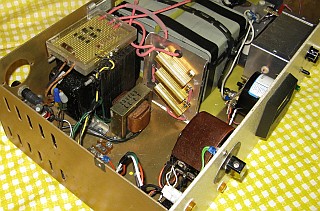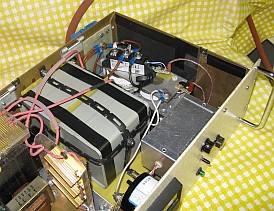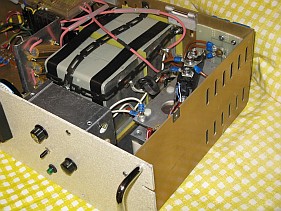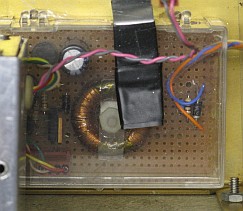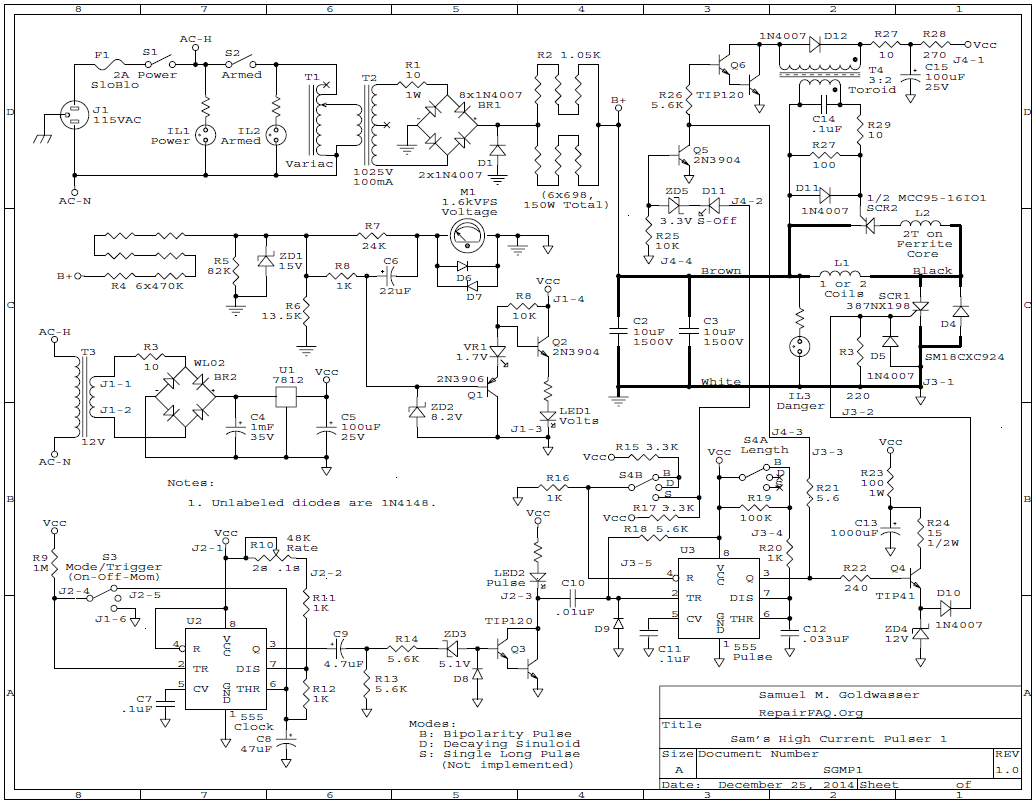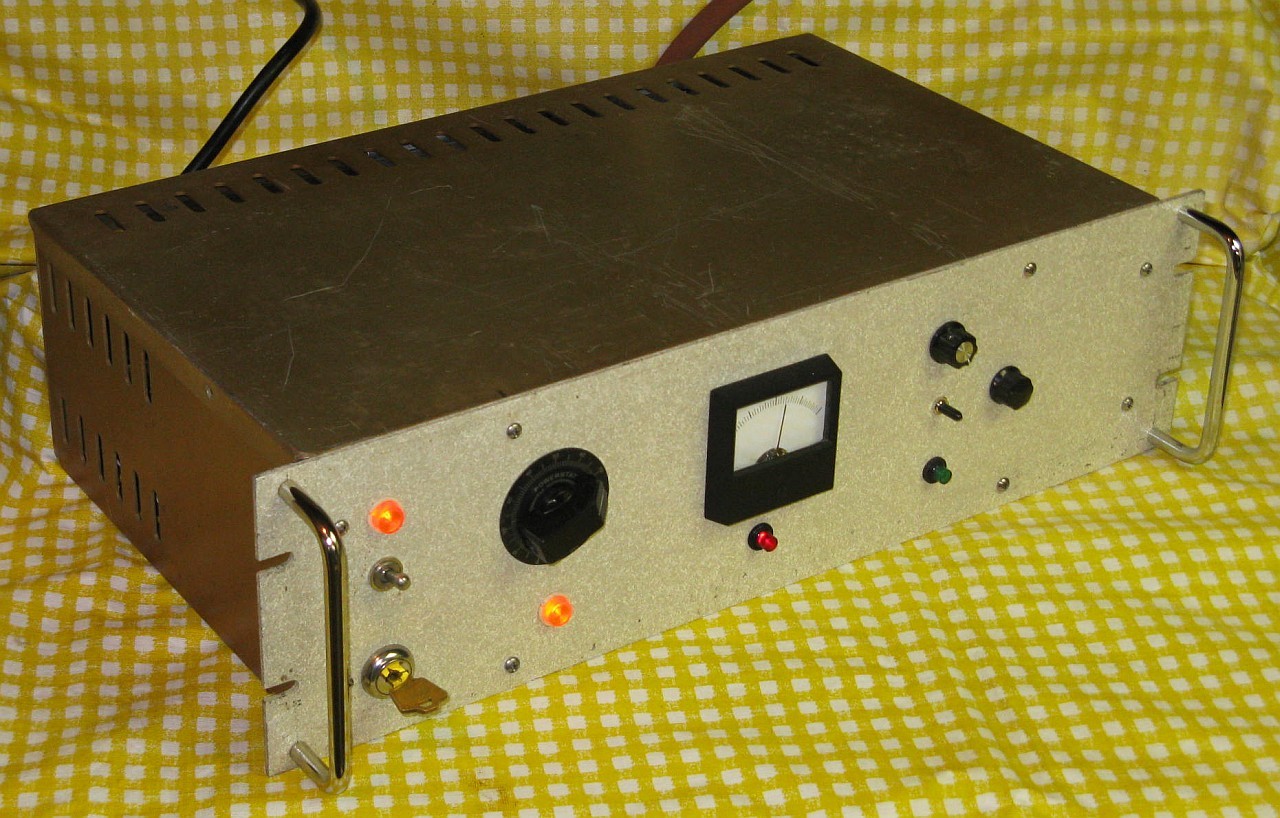

On the top left is the main power switch and indicator and below that the high voltage keylock switch. The timing circuits are enabled with main power so that the repetition rate can be set. Running without high voltage enabled but with charged capacitors is possible.
The Variac controls the high voltage from 0 to approximately 1320 V on the capacitors. The meter and red LED below it show the charge on the capacitors.
The knob to the right of the meter sets the pulse rate from approximately 1 pulse every 2 second to 10 pulses per second. The switch below it selects free run (up), off (middle), single shot fire (down, momentary). When used in this mode, the pulse repeat rate is still limited by the setting of the pulse rate control. The green LED flashes with each pulse.
The knob on the far right selects the pulse type: Bipulse (CCW), Decaying Sinousoid (Middle), Single Long Pulse (CW).
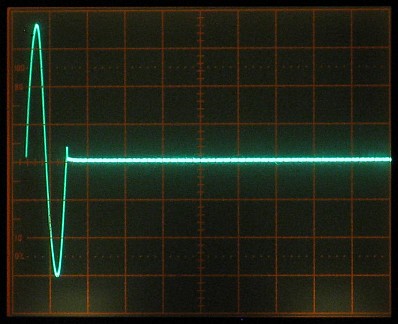
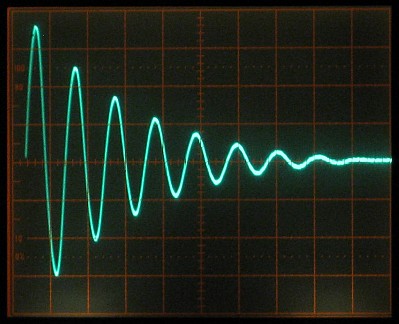
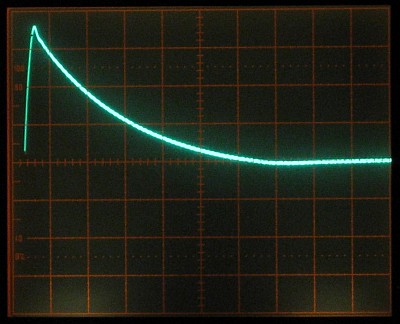
These used a coil with an inductance of approximately 34 uH resulting in a frequency of ~6.1 kHz or period of ~164 µs. The positive half-cycle is through the primary SCR. The negative half-cycle is through its associated parallel diode. The little blip at the end is believed to be due to the reverse recovery time of the primary SCR. (More below.)
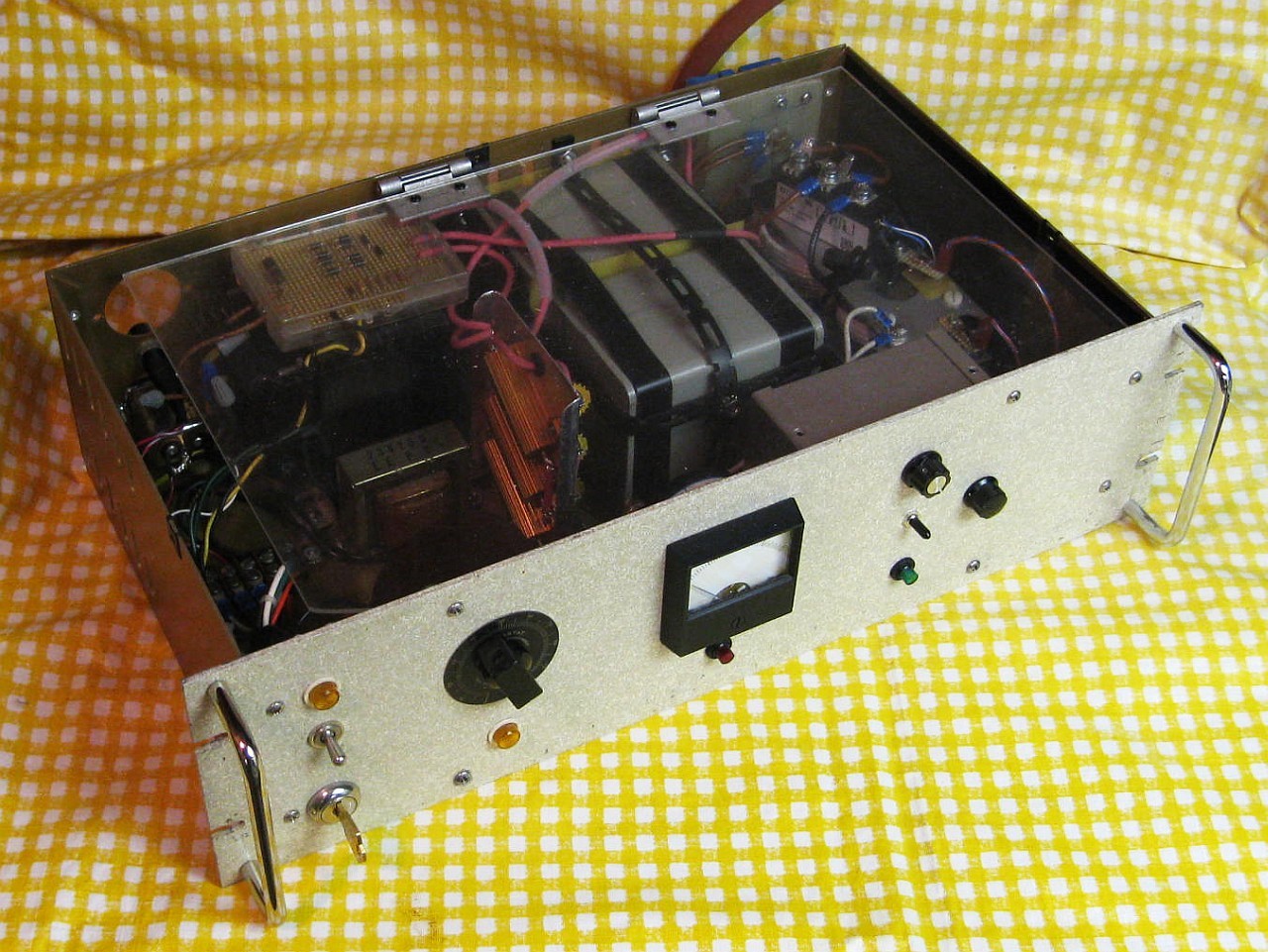
The high voltage power supply uses the power transformer from a large 1950s black and white tube-type TV controlled by a Variac. :) The transformer has multiple line voltage taps and is set to produce the highest voltage. With the Variac wired to go up to 110 percent of line voltage, its main output goes up to approximately 850 VRMS. A bridge rectifier consisting of 4 series pairs of 1N4007 diodes feeds the main energy storage capacitor via a 1.05K ohm 180 W series resistor bank resulting in a DC voltage of around 1,320 VDC. The resistor bank both limits the current from the transformer as well as providing isolation during the discharge to maintain a low damping factor.
A voltage divider feeds the meter with a peaking circuit to improve response time. The red HV LED is driven from a split emitter follower. The voltage divider is mounted along with the bridge inside a plastic box for insulation. The monitor circuits are attached to the back of the meter.
A separate 12 V transformer powers the logic and SCR drivers.
The main energy storage capacitors consists of a pair of 10 uF, 1,500 V pulse discharge capacitors in parallel.
Two high current SCRs and two high current diodes are used to create the three pulse types. The "hockey puck" style 800 A, 1,800 V SCR and 1,500 A, 1,800 V visible in the second photo from the left are a bit over the top in terms of what's required :) These are for the main pulse discharge. The smaller IXYS unit on top implements the free-wheeling discharge path for the Single Long Pulse. These are only rated at 95 A and 1,600 V but for low repetition rate high current pulses, should be able to handle 30 times this or more. The same IXYS unit would work for the main discharge except that its turnoff time was found to be too long to be able to select out only the single cycle for the Bipulse, thus the pucks were retained out of convenience.
All three pulse types start with the same 1/4 sinewave as shown in the expanded BiPulse below. The peak current is thus similar for all. What happens after that changes for the other two other pulse types.
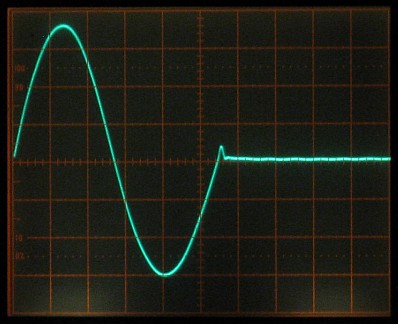
That free-wheeling SCR switch for the Single Long Pulse type turned out to be the most difficult to implement due to the requirement that its gate and cathode swing up to +/-1300 V with respect to the circuit common during the discharge. My first attempt using a home-built ferrite pulse transformer lasted about 3 shots due to insulation breakdown. Ferrite is supposed to be an insulator, correct? Nope, at least not this batch of cores at high voltage. A 1,500 A, 2,000 V hockey puck SCR originally installed for the free wheeling circuit failed shorted when its gate circuit arced through the trigger transformer core. Remarkably, nothing on the low voltage side was damaged. And the primary SCR and diode, which were then discharging into a dead short. also didn't seem to care. The core of the replacement trigger transformer has 2-3 layers of Kapton tape covered with Epoxy for insulation. :)
Coils with an inductance down to around 10 µH work with all 3 pulse types. This is rather surprising given that the primary SCR needs to recover within 1/2 cycle, which at 10 µH is under 60 µ:s. At an inductance of 3 µH, the free-wheeling SCR self-triggers with an input above about 1/2 line voltage. So, all three waveforms then like the Single Long Pulse. The cause is an EM transient picked up either in the wiring to the gate of SCR, or the driver itself. Adding a 1 µF capacitor across its gate delayed the onset to somewhat higher line voltage. Adding a 5 µF capacitor caused the free-wheeling SCR to fail shorted, probably due to too slow a rise in gate drive current. :( Lucky these are inexpensive on eBay. ;-) Disconnecting the gate drive cable eliminates this spurious triggering, and remarkably, the other two waveforms continue to work correctly, even with a full cycle (BiPulse) of under 70 µs.
The controller and its power supply are housed in the shielded Minibox. Whether the shielding is really needed is not known, but there was no point in taking chances with ~1000 A pulses floating around. :) The power supply provides regulated 12 VDC from AC from the small transformer mounted on the chassis. The "logic" consists of a pair of 555 timers. :) The first generates the clock for continuous (approximately 0.5 to 10 Hz), or single shot. It's output drives the Pulse LED and the 555 for the SCR trigger with a pulse width determined by Pulse Type: around 50 µs for Bipulse; 2 ms for Decaying Sinusoid and Single Long Pulse. These values should work over a reasonable range of coil inductances.
